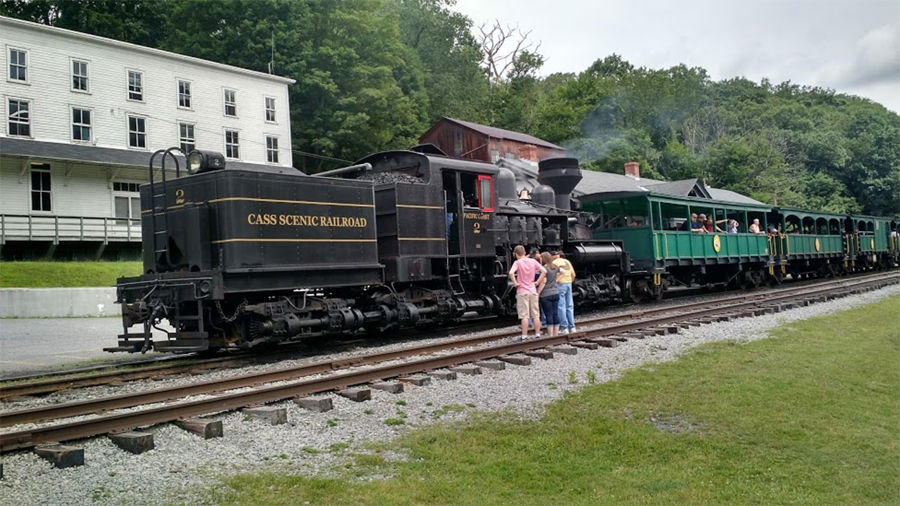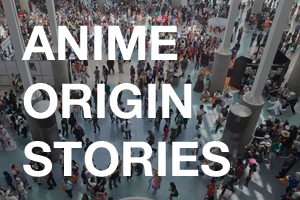
Before I married into a blue collar West Virginia family, I was a bit of a snob.
Chalk it up to growing up in the second richest county in the United States, perhaps. When I went to visit my new grandmother-in-law and she asked which Wal-Mart I got my designer purse from, I took it as an insult rather than, as I now realize, a genuine inquiry.
Now that John and I have been married for four years, these hiccups happen less and less. I no longer refuse to eat cheesy country cooking or think that living in a city means I’m somehow better off (my West Virginia relatives, who live on hundreds of acres of land they own, probably would think the opposite if they saw my tiny apartment). And I’ve come to discover that despite its problems with poverty and drugs, West Virginia can be a beautiful place.
Despite all this progress, something happened this weekend that made me very angry.
John and I were in town for a family reunion. (Despite the cultural divide, there are only about three hours separating us from rural West Virginia.) We went hiking and sightseeing at several natural and historic sites, one being the company town of Cass, West Virginia, which currently has a population of 52 people.
Two wealthy lumber tycoons founded the town around 1900 to transport timber up and down a nearby mountain via coal-powered train (which tourists still ride today). It’s incredible how well the history of the white people who lived and worked there has been preserved.
Before our train ride, I checked out the free museum, which included a big map of the town. There were the big company-built homes, the doctor’s estate and Company Store, and below the river, there was a huge cluster of smaller homes labeled “Colored Bottom.” I looked all around the museum, which included tons of meticulously gathered information and preserved photos of white faces, but I couldn’t find another reference to this part of the town.
Finally, I asked the museum proprietors about it, an older man and woman who have both lived in Cass their whole lives. Turns out, even though the lumber company employed black people in the least desirable jobs, they did not provide housing for them, and historians did not think the black part of town, with its small, rickety houses, was worth preserving. Eventually that whole part of town, which was on the lowest elevation, washed away in a 1980s flood, and the entire black population, I was told, “moved away.”
Fortunately, the curators still had their memories, and told me some colorful racist anecdotes about Cass right after the town’s school integrated in the ‘50s (believe it or not, West Virginia was one of the first states to desegregate schools). But when I asked about why the black residents weren’t part of the historical exhibit, they explained that “Colored Bottom” had its own church, its own stores, and for a while, its own school, so it probably had its own photos, too. Unfortunately, I can’t find even a mention of this part of the town when I look online. This is a part of history that makes people uncomfortable, so it’ll probably just be forgotten.
This encounter left a sour taste in my mouth for the rest of the trip. Finally, I realized why I couldn’t stop thinking about it—every time I visit West Virginia, I am expected to leave my own values at the door and embrace people who are different from me. So when I saw an entire town not practicing that, it made me furious.
It was also a stark reminder for me as a journalist. It’s clear that the story of Cass is only the parts of the story people want to remember. I advocate subjectivity in storytelling, but this is its downside—the possibility that you’re telling only the half of the story you care about.
Going to places where I don’t feel at home and having discussions that make me uncomfortable—these are things that I must continue to do as a journalist. There’s a danger in only telling the story you’re comfortable with, and it’s that the stories of the few and disadvantaged will just be ignored and forgotten.
Journalism already has a class problem, and it’s up to us to not make it worse. It’s important for journalists to challenge themselves to tell stories they’re not already familiar with. We can’t be like the museum curator and say, “they probably have their own photos.” What made me upset about the use of “they” and “them” was that it’s not us and them—the same way I’ve had to slowly learn that me and my new family are not an “us” and a “them.” The curators and their ancestors lived and worked with black residents, so why aren’t these residents included in the historical exhibits for tourists?
It’s up to us to find and tell these stories, because otherwise, these stories might not be told at all.
Discover more from Otaku Journalist
Subscribe to get the latest posts sent to your email.




8 Comments.
This all reminds me of my childhood and most of my young adulthood growing up in an area that used to be white, but became almost entirely black. During the time I was born, my area was filled with a large number of whites, but then once black people discovered my area, the whites slowly migrated out. My family had white neighbors that were always welcoming to us. I had a white friend whose place I always came over to. My summer with him was full of fun, but then the family moved away to Florida suddenly. My white neighbors moved away too. I never understood why since I was 12-13 when this happened until I learned about “white flight.”
There’s been stuff written about this too. http://www.city-data.com/forum/new-york-city/2704811-white-flight-canarsie.html
You’re right that journalism has a class problem and I felt that tied into how the perception of my area was turning out. All these concepts of “us vs them” are shared with no honest feedback about their ramifications because no one bothers to ask because it’s what they’re taught. No white person wants to live in homes filled with people that are labeled “ghetto.” I had a decent time living there, but my family and I eventually moved out because we felt the place was too big and there were people blasting all night during summer weekends. As much as I value racial diversity, that shouldn’t give a reason for anyone to not be courteous to others at the right time, but I suppose that’s why stereotypes still persist.
My family and I still think our old area is nice and there are still a few whites (who are mostly senior citizens) living there, but most NYC people who are white/Asians looking for a house to live in will rather go somewhere else. You can see why I had to go to Chinatown for my anime fix! -___-‘
Both Lauren & MangaTherapy’s stories remind me of the city I was born in, New Brunswick, NJ, & how my mother would always tell me about how a notable section of it was pretty much all Hungarian following the Hungarian Revolution of 1956 (when my father came to America), & was like that until about the late-70s/early-80s (a few years after my mother came), when Hispanic people more or less came in & “took over” (for lack of a better term) a lot of the area. Now all that remains Hungarian in that neighborhood are a couple of churches, a Hungarian school, the Hungarian scouts building, plus a Hungarian-American club building & a small museum, all of which is housed on a single street & a small part of an intersecting street; there was even more (like a bar & a restaurant). but that all went away within the past decade. At the very least, that area still holds a Hungarian Festival every year. I guess that area is lucky to still have all of that, though, compared to places like Cass, WV & its “Colored Bottom”.
[…] The importance of telling uncomfortable stories (Otaku Journalist) […]
[…] beautiful, albeit packed with ugly spots. Lauren Orsini at Otaku Journalist published a surprisingly personal piece, which ties her recent trip to rural West Virginia to her life as a journalist. She ties […]
Unfortunately America has a history of racism that still continues to this day. Here in Miami, FL there’s a Railroad museum that has old trains you can go inside of. They had pictures of the colored people from back then, and on some of the information displays they talk about the racism they experienced, or the poor conditions they worked/lived in. I was saddened to see their faces, and thought about how they worked so hard (the same as a white person would) and yet were paid less, treated worse, all because their skin is a different color.
As a Cuban, Latino American (born in New York City, raised in Miami), I don’t see much racism towards latinos but I know it happens in other areas. In my opinion, it’s a spiritual and heart matter. Americans need to be more humble, and accept the fact that this country has many different races living in it, not just white Americans who descended from Europe.
@Samuru:disqus thanks for weighing in. As sad as that exhibit near you is, it’s heartening to hear that the museum is preserving photos and stories that showcase an uncomfortable truth.
Americans DO need to be more humble. Today we are anti-immigrant, forgetting all the things immigrants have done for America. It’s a weird and upsetting turn in our history.
Thanks for replying :) Yeah, I’m glad that they were preserved and not hidden. It’s an uncomfortable truth, but it’s part of history and it’s there to learn from and try not to repeat (though it will be, because…people).
Yes, we are very “anti-immigrant” yet….we are a COUNTRY of immigrants. Unless your Native American, which is another sad and horrible story in itself, you weren’t an immigrant. Sure, it goes way back many generations for some families and that’s understandable (my family has been here three generations, I’m third, which isn’t even a lot!) but we have to be respectful to others who are just starting out here. Sorry, didn’t mean to go into a rant, but yeah….it’s a topic that weighs on my heart at time. God bless ya!
My dad is an immigrant, but since he immigrated as a child instead of an adult, I’ve heard it argued that this makes me a second generation American. Either way, I was recently at a meet-up for Japanese speakers, and I asked a person speaking about his childhood in Japan if he was an immigrant. He told me that he prefers to be called an “ex-pat.” Immigrant is sort of a bad word these days.